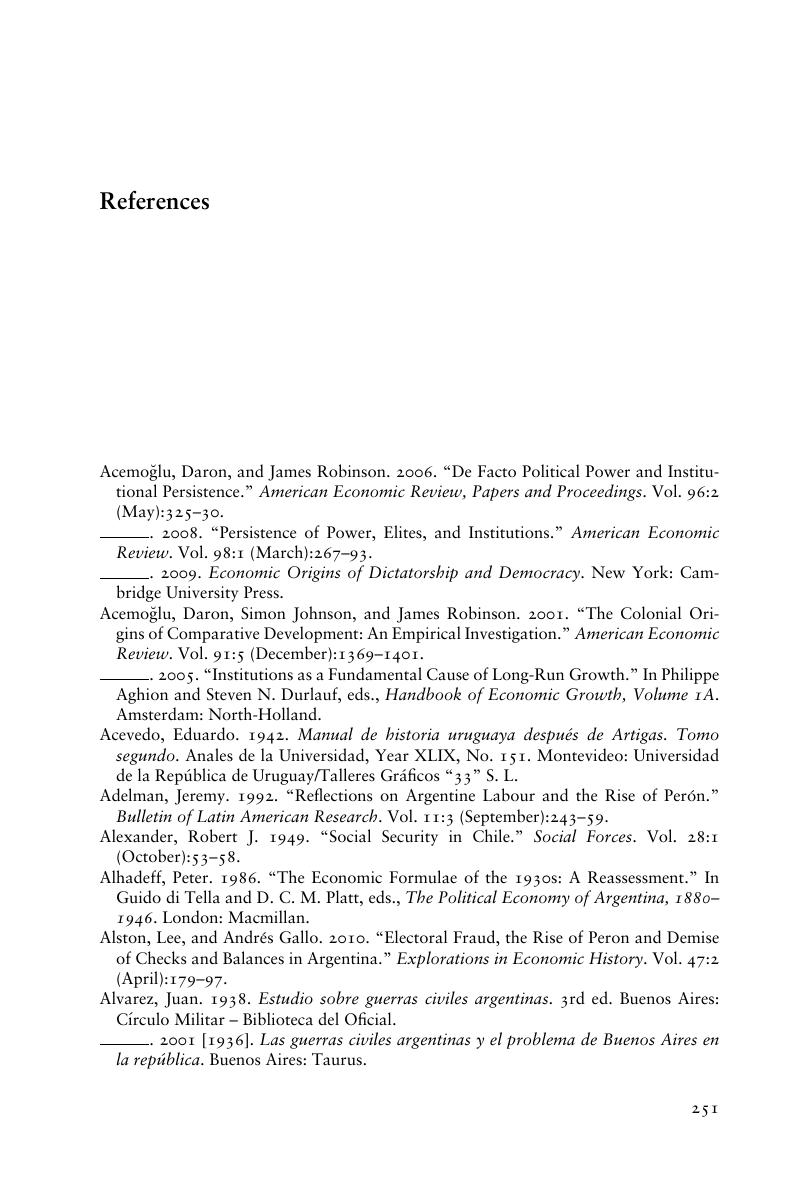Book contents
- Frontmatter
- Contents
- Acknowledgments
- 1 The Difficulties of Studying State Building
- 2 The Social Foundations of State Building in the Contemporary Era
- 3 State Formation in Chile and Peru
- 4 State Formation in Argentina and Uruguay
- 5 Divergence Reinforced
- 6 The Social Question and the State
- 7 Conclusions, Implications, and Extensions
- References
- Index
- References
References
Published online by Cambridge University Press: 05 February 2013
- Frontmatter
- Contents
- Acknowledgments
- 1 The Difficulties of Studying State Building
- 2 The Social Foundations of State Building in the Contemporary Era
- 3 State Formation in Chile and Peru
- 4 State Formation in Argentina and Uruguay
- 5 Divergence Reinforced
- 6 The Social Question and the State
- 7 Conclusions, Implications, and Extensions
- References
- Index
- References
Summary

- Type
- Chapter
- Information
- Latin American State Building in Comparative PerspectiveSocial Foundations of Institutional Order, pp. 251 - 270Publisher: Cambridge University PressPrint publication year: 2013

